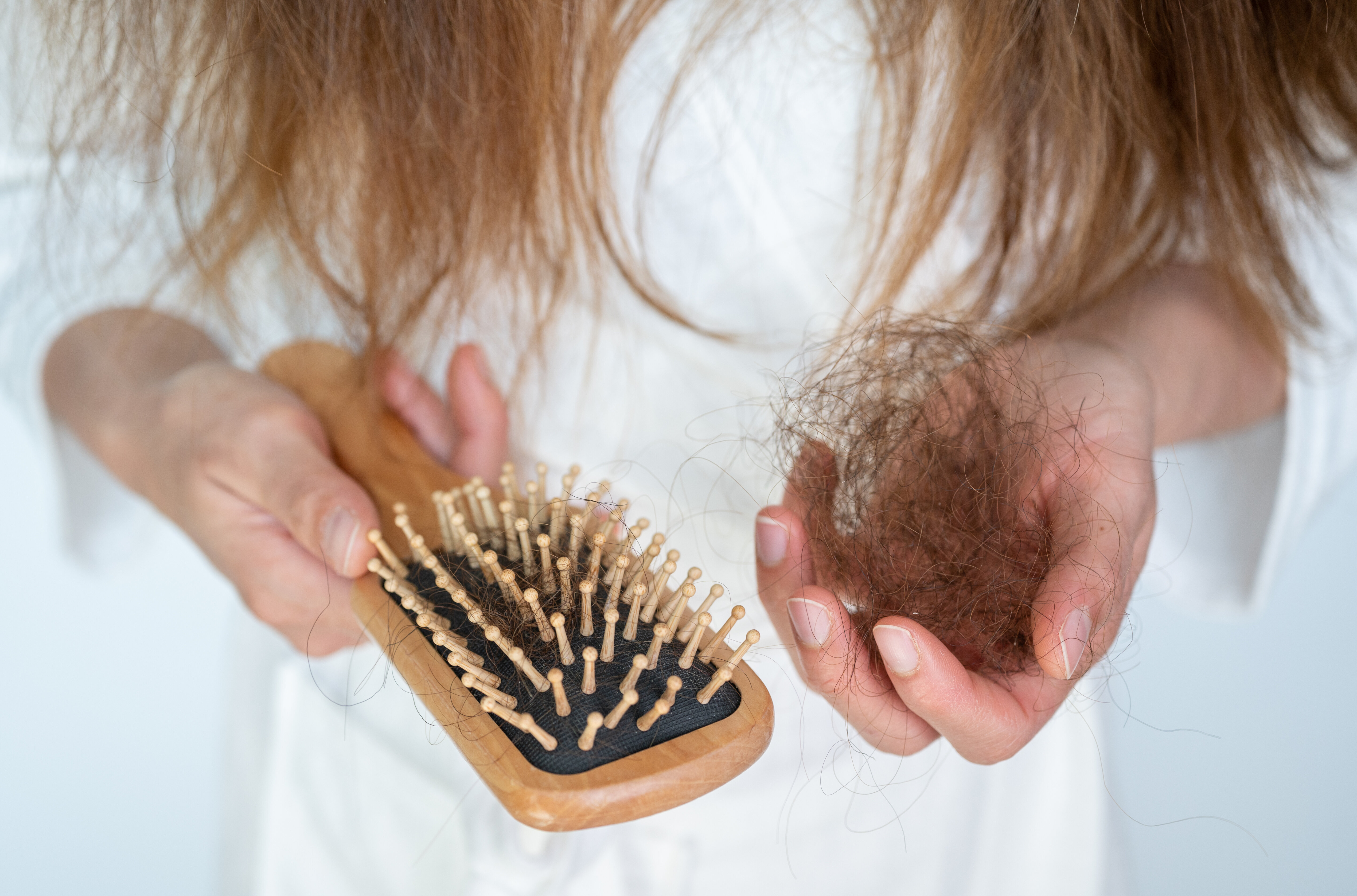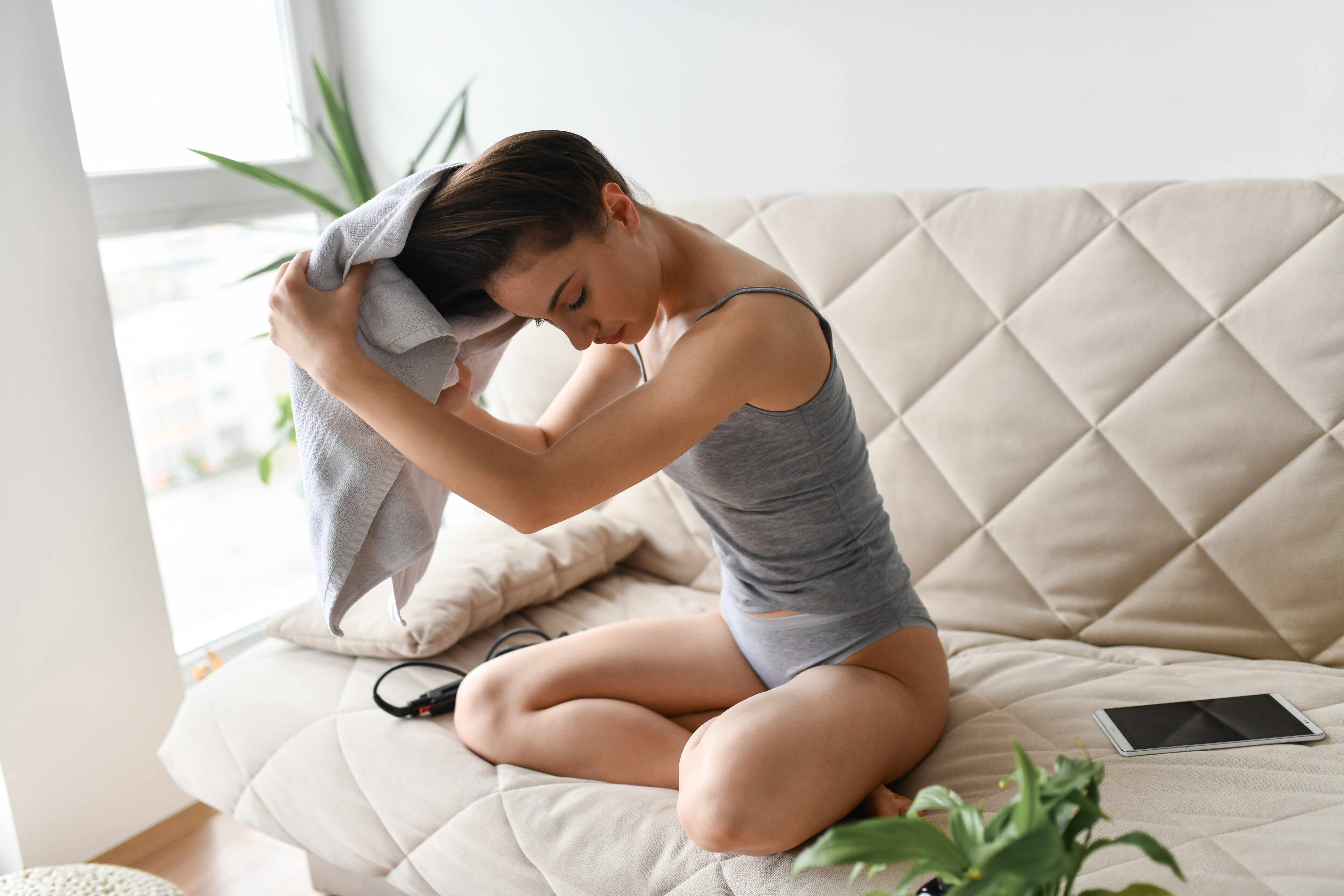While everyone sheds hair daily, it can be alarming when you find an extra-thick clump of hair stuck in your brush or circling the shower drain. So how do you know when the amount is “normal” and what’s causing it?
Though it varies from person to person, men and women generally lose about 50 to 100 hairs per day.
“We have over 100,000 [hair] follicles on our heads, and hair is in stages of growth or resting,” Penny James, a board-certified trichologist at the Penny James Trichology Center, told HuffPost.
The last stage of the hair growth cycle is when hair sheds, making room for new hair. This cycle continues unless there is some sort of imbalance, which can change the amount of hair you’re losing.
“When suddenly you are finding hair on the pillow … or in the shower drain, and it’s [more than you normally see], then that’s excessive,” saidDr. Joyce Davis, a board-certified dermatologist in New York.
We talked to experts about common (yet surprising) reasons you may be shedding more hair than usual — and what you can do about it.
You’re not getting enough nutrients.
If you’re lacking nutrients (including iron, zinc, fatty acids, vitamin D and some B vitamins), you could be shedding more hair, according to Dr. Danilo C. Del Campo, a board-certified dermatologist in Chicago.
“These nutrients play crucial roles in maintaining hair follicle health and supporting hair growth cycles,” he explained.
Davis recommended consuming two animal sources of protein a day (such as eggs, fish, chicken or dairy products) because they contain all the essential amino acids. She also suggested a multivitamin with iron. If you have dietary restrictions or suspect you may have nutritional deficiencies, schedule an appointment with a nutritionist to talk through what you’re eating and what may need to be added.
“Hair shedding will slow down once your diet has been regulated and you take in the … nutrients and proteins needed,” James said.
You’re not washing your hair and scalp enough.
If you don’t wash your hair frequently, you may notice more hair in the shower drain when you finally do rinse it. This could be due to the acute buildup of sweat, oil, dry shampoo and other styling products.
“Keeping a healthy scalp and clean hair will help the hair follicle thrive, causing less irritation on the scalp and less shedding,” James said.
So how often should you be washing your hair and scalp? For Afro-textured hair, James recommends washing about once a week. For other hair types and textures, she suggests three to four times a week.
The seasons are changing.
Though not everyone experiences this, some people shed more hair depending on the time of year.A study published in the British Journal of Dermatology in 1991 showed that more hair shedding can start as early as March and continue through September. “More people of all hair types experience more shedding in the summertime,” James explained.
Why does this happen? Scientists speculate that more vitamin D from the longer days and warmer weather causes new hair to grow, which triggers old hair to fall out. The change of weather can also bring a shift in your diet, and the nutrients you are consuming can affect hair shedding.
You’ve recently had a high fever or major illness.
A high fever, surgery, severe illness or other physical stressors can cause a temporary condition calledtelogen effluvium. This causes hair to transition more quickly from the growth phase to the resting phase, Del Campo said.
“After a medical illness, the body typically has to rest and rebuild itself,” Davis explained. “The body skips making hair to try to correct something that’s more important for your well-being.”
This can lead to increased shedding a few months after the illness once the body has recovered. (This is the reason many people have reported hair loss after having COVID-19.) The shedding usually corrects itself within about six months, according to Davis.
You’re experiencing a lot of stress.
Stress triggers the hormone cortisol to be overactive, which can cause extra hair shedding, James said. High levels of cortisol are known to affect the “function and cyclic regulation” of the hair follicles, according to this study. If you do experience hair shedding, it will generally occur three to six months after the severe stress.
Reducing your stress can help. Eat ahealthy balanced diet,exercise regularly,get plenty of sleep and trymeditation, breathing exercises or stretching.
Your hormones are changing.
Hormone shifts for both women and men can lead to temporary or permanent hair loss.
New moms often notice hair shedding about three months aftergiving birth as their oestrogen levels drop. When hormones return to normal, hair usually regrows (about six to nine months after having a baby). Women’s hair may also fall out during menopause as their oestrogen and progesterone decreases. For men and women, a hormone called DHT can cause the hair follicles to shrink, and hair eventually stops growing in them, according to WebMD. This type of shedding continues as long as the hormone stimulus remains, Davis said. (There are treatments available to help maintain and regrow hair.)
Thyroid issues can also disrupt the hair growth cycle. Whether you have hypothyroidism (too little of the hormone) or hyperthyroidism (too much of the hormone), both are known to cause hair shedding. Once the thyroid condition is treated, the shedding should stop in about three months, according to Davis.
You’re taking a new medication.
Some medications, such as chemotherapy drugs, antidepressants and non-steroidal anti-inflammatory drugs (NSAIDs), cause hair loss as a side effect, according to Del Campo.
If your hair falls out more after starting a new medication, talk to your doctor about alternatives, James advised.
The way you style your hair is damaging it.
Excessive use of hot tools and other methods of styling your hair could contribute to breakage and trauma to hair follicles, causing temporary or even permanent hair loss, according to Del Campo.
In general, he advises limiting the use of hot tools to two or three times a week and using the lowest temperature setting that effectively styles the hair. (It’s better to avoid hot devices altogether, he said.)
As for styling, “If you’re going to pull your hair into a ponytail, don’t make it so slick and tight that you put pressure on the roots,” Davis said.
She said most beauty treatments and hair products are safe these days. (Although it’s probably better to go to a salon if you’re trying a process like a perm or relaxer for the first time.)
When should you get help for excessive hair shedding?
If your hair is falling out more than usual for an unexplained reason, schedule an appointment with a trichologist or dermatologist.
Davis said it’s important to remember that most hair loss is treatable. Excessive hair shedding may correct on its own or by making a certain change. But when it doesn’t, there are many options available now for treating hair loss.






